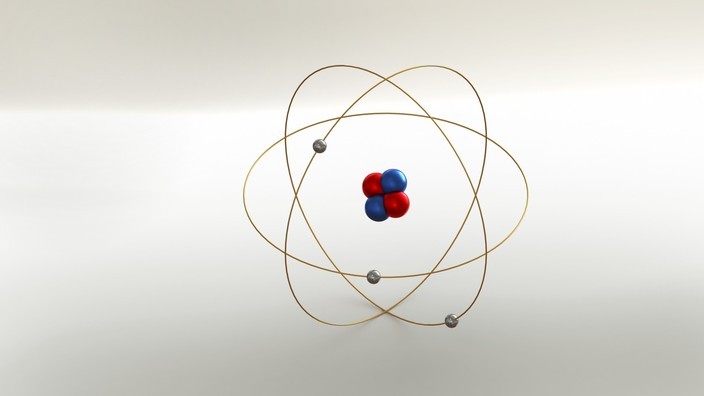(单词翻译:单击)
Neutrons and protons occupy the atom's nucleus. The nucleus of an atom is tiny—only one millionth of a billionth of the full volume of the atom—but fantastically dense, since it contains virtually all the atom's mass. As Cropper has put it, if an atom were expanded to the size of a cathedral, the nucleus would be only about the size of a fly—but a fly many thousands of times heavier than the cathedral. It was this spaciousness—this resounding, unexpected roominess—that had Rutherford scratching his head in 1910.
中子和质子占据了原子核。原子核很小——只有原子全部容量的千万亿分之一,但密度极大,它实际上构成了原子的全部物质。克罗珀说,要是把原子扩大到一座教堂那么大,原子核只有大约一只苍蝇那么大——但苍蝇要比教堂重几千倍。1910年卢瑟福在苦苦思索的,就是这种宽敞的空间——这种令人吃惊、料想不到的宽敞空间。
It is still a fairly astounding notion to consider that atoms are mostly empty space, and that the solidity we experience all around us is an illusion. When two objects come together in the real world—billiard balls are most often used for illustration—they don't actually strike each other. "Rather," as Timothy Ferris explains, "the negatively charged fields of the two balls repel each other. . . were it not for their electrical charges they could, like galaxies, pass right through each other unscathed." When you sit in a chair, you are not actually sitting there, but levitating above it at a height of one angstrom (a hundred millionth of a centimeter), your electrons and its electrons implacably opposed to any closer intimacy.
认为原子主要是空荡荡的空间,我们身边的实体只是一种幻觉,这个见解现在依然令人吃惊。要是两个物体在现实世界里碰在一起——我们常用台球来作为例子——它们其实并不互相撞击。“而是,”蒂姆西·费里斯解释说,“两个球的负电荷场互相排斥......要是不带电荷,它们很可能会像星系那样安然无事地互相穿堂而过。”你坐在椅子上,其实没有坐在上面,而是以1埃(一亿分之一厘米)的高度浮在上面,你的电子和它的电子不可调和地互相排斥,不可能达到更密切的程度。


